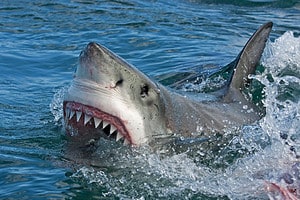Although they all belong to the family Carangidae, jackfish are a varied bunch. There are over 150 species of jackfish belonging to numerous genera, and they can be found in many brackish, freshwater, and saltwater environments across the world.
With so much variation in the jackfish family, you may be wondering how big they can get. Many species of jack can get pretty big and are often sought after for food and sport. In this article, we’ll take a look at some of the bigger and more interesting members of the jack family and find out a little bit about them.
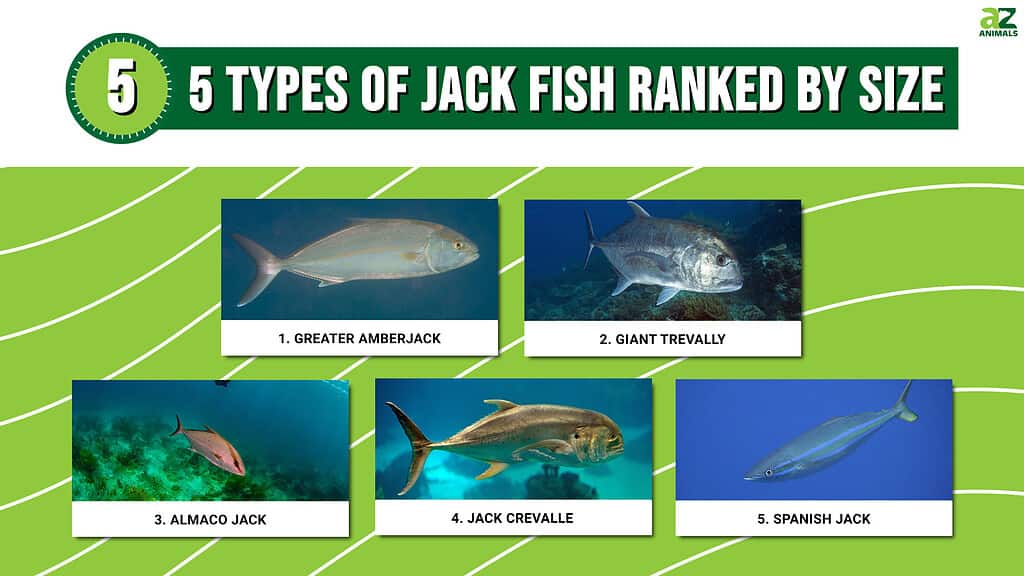
Greater Amberjack (Seriola dumerili)
These gigantic jacks are the biggest on the list, topping out at 200 pounds in weight! Although most of them do not reach that size in their lifetimes, they still weigh between 40 and 50 pounds on average.
Greater amberjacks can grow to an impressive 6 feet in length and can live for up to 17 years. Although they can get very large, those of average size can be difficult to distinguish from other jacks. Young members of the species exhibit a yellowish color and darker, vertical banding that runs down their sides. As they reach maturity at around 3 or 4 years of age, they start to become browner or blue-grey and have an amber-colored strip that runs the length of their bodies.
Their diet changes as they age to reflect their increasing size. While smaller jacks subsist primarily on plankton, small invertebrates, and crustacean larvae, adults feast on larger crabs, squid, and reef fish to maintain their size.
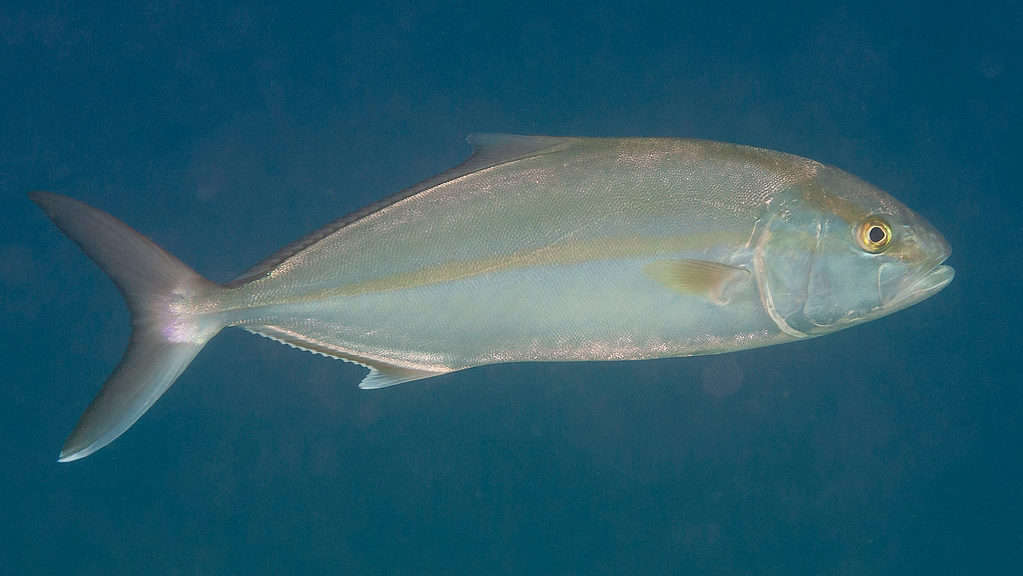
A greater
amberjack
.
©Jesus Cobaleda/Shutterstock.com
Giant Trevally (Caranx ignobilis)
Being that it is the largest member of its genus, the giant trevally has truly earned its name. These aggressive predator fish can reach truly huge sizes, trailing just behind the greater amberjack for the number one spot. The largest giant trevally on record weighed a little over 176 pounds and measured 67 inches in length!
Most mature males of the species will average between 33 and 39 inches in length and weigh between 40 and 60 pounds. Impressively, these huge predators can swim as quickly as 37 miles per hour. They use this speed to chase and ambush prey underwater and will occasionally clear the ocean’s surface to catch and eat birds!
The giant trevally is not only very large but also pretty intelligent. They will often follow other larger predators, like sharks and monk seals, and ambush any prey fish that escape their grasps. They often feed solitarily and will eat whatever is convenient to them. Crustaceans, cephalopods, and even tuna and mackerel are all on the menu.
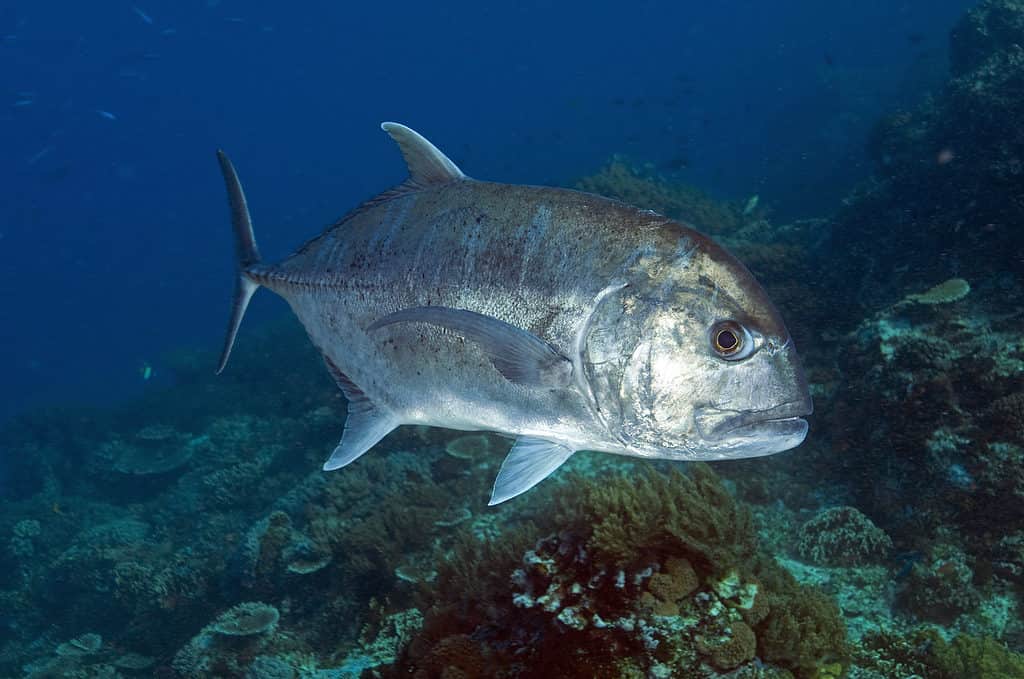
These fish are so fierce that they occasionally ram
sharks
with their heads, injuring or even killing them. When curious, their instinct is to bite.
©zaferkizilkaya/Shutterstock.com
Almaco Jack (Seriola revoliana)
The almaco jack is closely related to the greater amberjack but often resides at greater depths. Although these jacks have made record weights of around 75 pounds, they often do not get that large. Adult almacos most commonly weigh around 20 pounds.
They spend much of their time searching for food along reefs and rock outcroppings. They often take up residence near offshore oil rigs and gas platforms. The almaco jack is similar in appearance to the greater amberjack but is narrower down its length and less round in overall cross-section. They are similar in terms of coloration as well but tend to be more on the gray side.
This jackfish species is also referred to as the longfin yellowtail. It is edible and tasty like the Japanese amberjack, which people commonly prepare and serve raw as yellowtail sushi or sashimi.
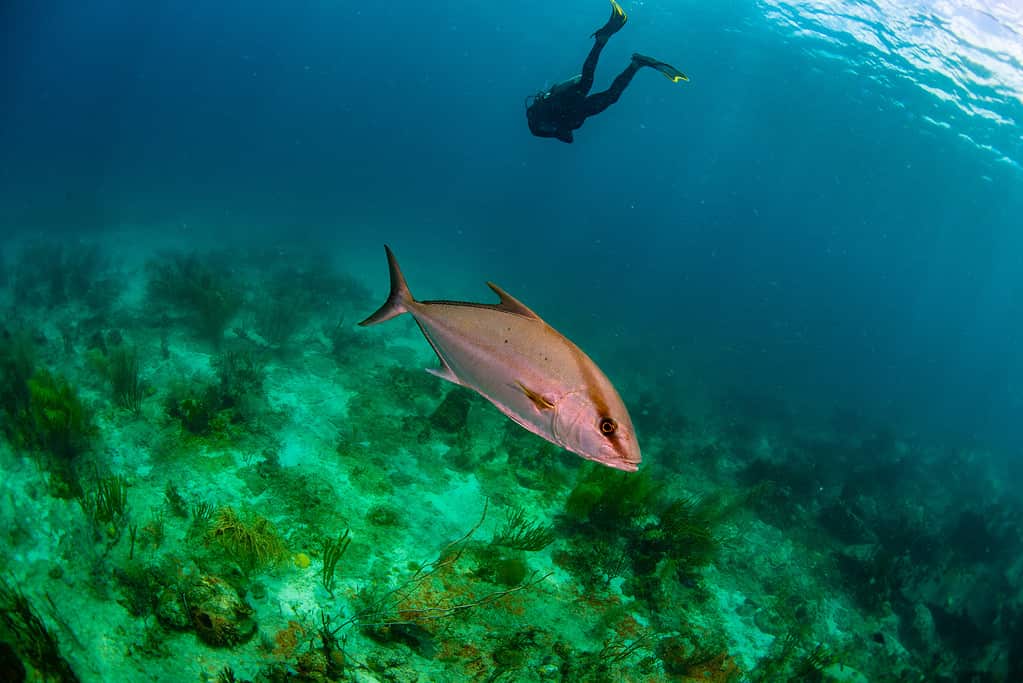
Almaco jackfish often take up residence near offshore oil rigs and gas platforms.
©bcampbell65/Shutterstock.com
Jack Crevalle (Caranx hippos)
The jack crevalle is a species of jackfish that lives in both inshore and open waters. These quick and aggressive predatory fish can get pretty big, averaging between 5 and 20 pounds. The Florida state record, which also happens to be the world record catch for this fish species, was set in 2011 by a young angler who reeled in a 58 1/2-pound jack!
The jack crevalle is blue-green or greenish-gold in color with a silvery-yellow belly. They also have characteristic and prominent black spots that appear singly on their gill covers and each pectoral fin. They also have a very steeply-sloped head that curves aggressively to meet their back.
Whether out in the open or close to shore, these strong and fast predators herd schools of prey into tight groups and then dart in from all angles to feed. Because of their vigorous nature, these fish are highly sought-after by ocean anglers for their thrilling fight at the end of a line. They are not only popular for sport, either — if prepared correctly, they can also make for a tasty meal.
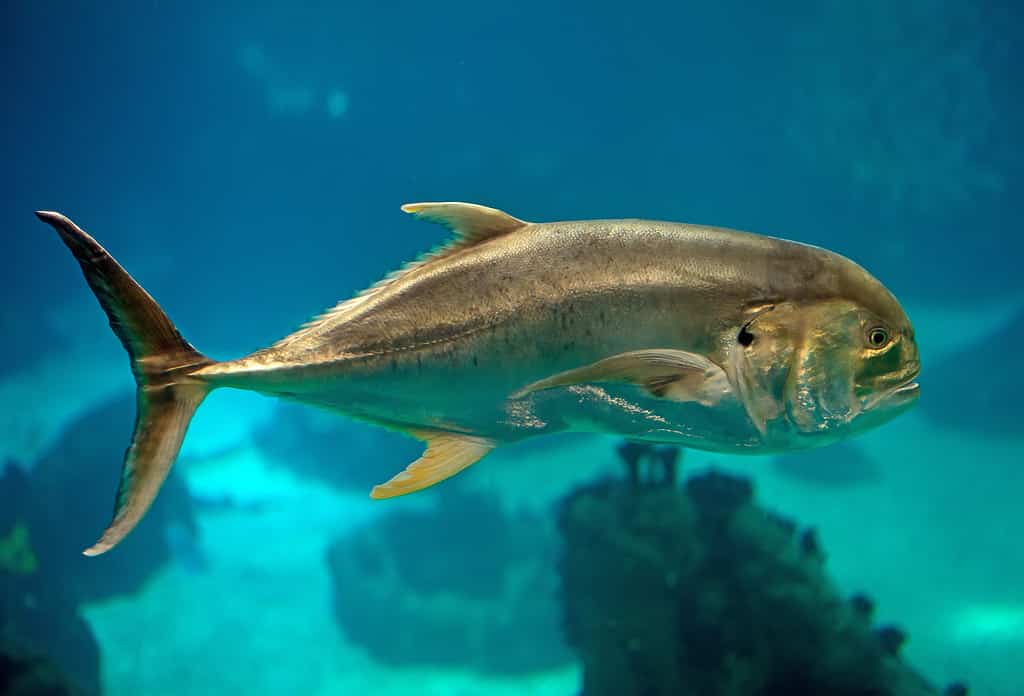
The jack crevalle is a vigorous predator with a reputation for being an exciting game fish.
©M-Production/Shutterstock.com
Spanish Jack (Elagatis bipinnulata)
Also known as the rainbow runner, this long, slender species of jackfish can reach maximum lengths of up to 6 feet! But while they may reach this size on the upper end, most rainbow runners only get to be about 3 feet long. That’s still pretty impressive when you take into account that they usually weigh between 15 and 20 pounds on average.
These gorgeous fish get their name from the almost iridescent coloring of their scales. Each one is primarily blue-green with a white belly. Stripes of brilliant blue, olive, or yellow run down the sides of the body. The rainbow runner is the only species in its genus and members of the species take up residence all across the world’s tropical oceans.
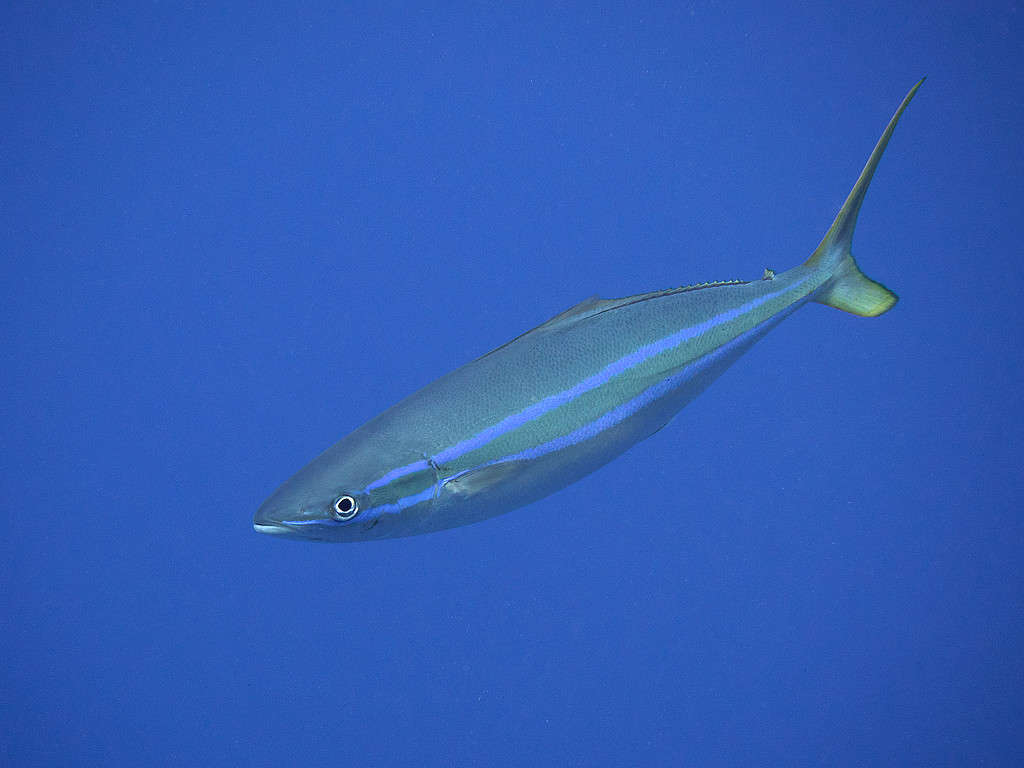
These gorgeous fish get their name from the almost iridescent coloring of their scales.
©Anke W/Shutterstock.com
Summary of 5 Types of Jack Fish Ranked by Size
| Rank | Jack Fish | Average Weight |
|---|---|---|
| 1 | Greater Amberjack | 40 – 50 lbs |
| 2 | Giant Trevally | 40 – 60 lbs |
| 3 | Almaco Jack | 20 lbs |
| 4 | Jack Crevalle | 5 – 20 lbs |
| 5 | Spanish Jack | 15 – 20 lbs |
The photo featured at the top of this post is © Jack Leahy/Shutterstock.com
Thank you for reading! Have some feedback for us? Contact the AZ Animals editorial team.




